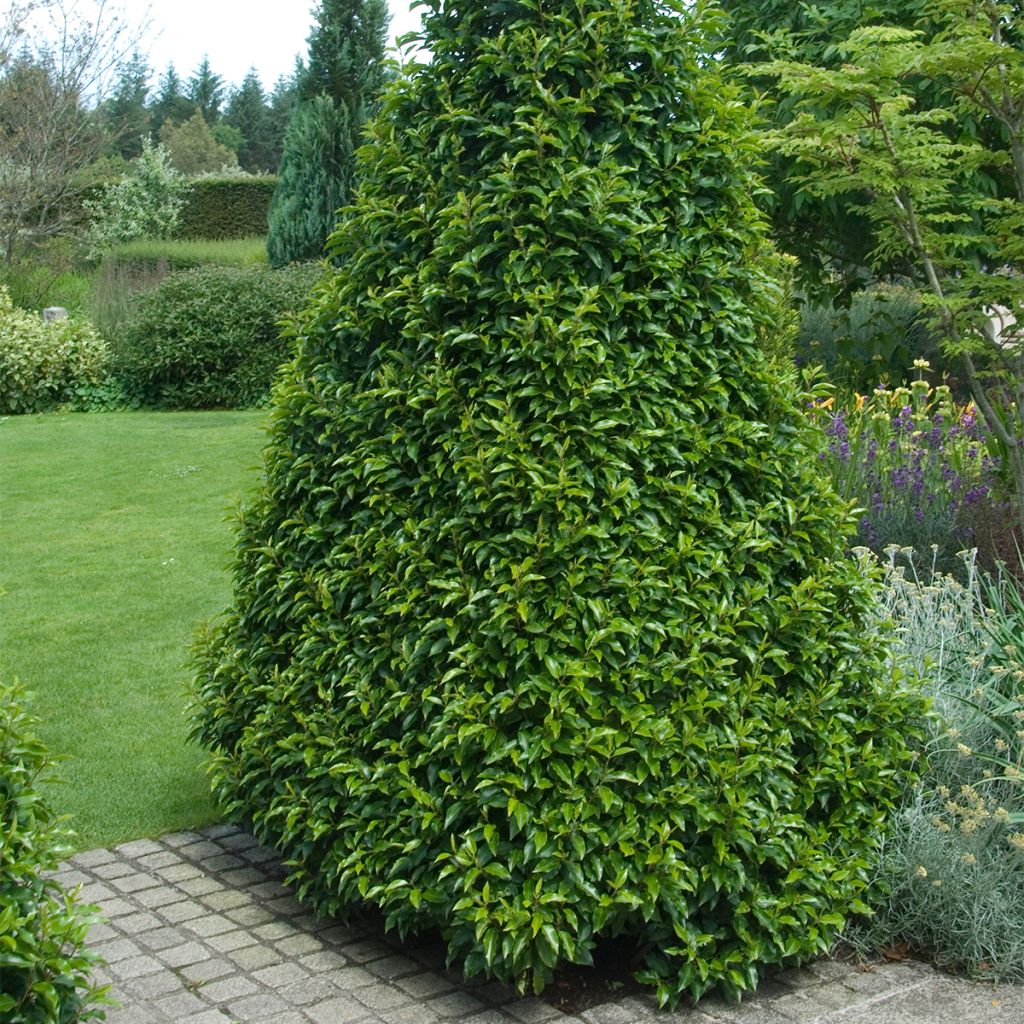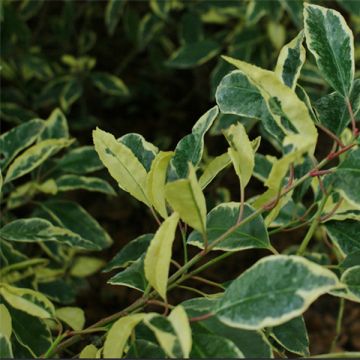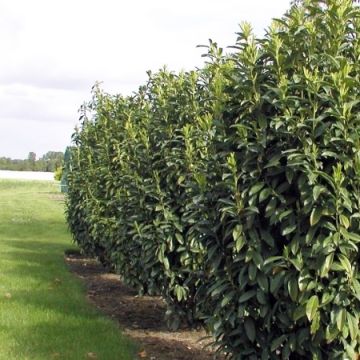

Prunus lusitanica Myrtifolia


Prunus lusitanica Myrtifolia
Prunus lusitanica Myrtifolia
Prunus lusitanica Myrtifolia
Laurier du Portugal, Prunier du Portugal
The naked Prunus arrived in perfect condition within a 48-hour deadline. Top-notch service.
Françoise, 01/04/2023
Special offer!
Receive a €20 voucher for any order over €90 (excluding delivery costs, credit notes, and plastic-free options)!
1- Add your favorite plants to your cart.
2- Once you have reached €90, confirm your order (you can even choose the delivery date!).
3- As soon as your order is shipped, you will receive an email containing your voucher code, valid for 3 months (90 days).
Your voucher is unique and can only be used once, for any order with a minimum value of €20, excluding delivery costs.
Can be combined with other current offers, non-divisible and non-refundable.
Home or relay delivery (depending on size and destination)
Schedule delivery date,
and select date in basket
This plant carries a 24 months recovery warranty
More information
We guarantee the quality of our plants for a full growing cycle, and will replace at our expense any plant that fails to recover under normal climatic and planting conditions.
Would this plant suit my garden?
Set up your Plantfit profile →
Description
The Prunus lusitanica Myrtifolia is a variety of naturally compact Portuguese Laurel, which forms a dense, well-shaped pyramid that will not need pruning. This small tree has beautiful shiny green foliage, decorative even in winter, and offers a pleasant spring flowering in elongated, frothy white clusters, whose scent attracts pollinators. This variety is ideal in well-drained, moist to dry, even limestone soil, planted in a free or pruned hedge, or shaped into topiary. Less hardy than its cousin the cherry laurel, it is also drought-tolerant and more ornamental.
The Portuguese Laurel, in Latin Prunus lusitanica, is a bush belonging to the rose family. It is native to Spain and Portugal, but naturalized in the southwest of our country, especially in the Basque Country.
The cultivar 'Myrtifolia' distinguishes itself with its reduced growth, denser habit, and narrower leaves. Reaching about 3m (9 ft 10 in) in height and 1.50m (4 ft 11 in) in width at the age of 10, it shows fairly rapid growth. Its red branches bear elongated, toothed, evergreen leaves, 6 to 8cm (2.4 to 3.1 in) long, very shiny, dark green on top, lighter underneath. In May, it produces fragrant, nectar-rich, cup-shaped white flowers, grouped in narrow, pendant clusters, 15 to 20cm (5.9 to 7.9 in) long. The fruits consist of small oval berries, 8mm (0.3 in) in size, red turning dark purple and then black, highly toxic if ingested.
The Portuguese Laurel Myrtifolia requires deep and loose soil, especially in the warmer regions of our country. It thrives in oceanic climates but also adapts to the hotter regions of our country. It is often used as an evergreen hedge, pruned or unpruned, in combination with Photinias, Elaeagnus ebbingei, laurel-tin, or Cotoneaster, for example. It can also be placed as a standalone specimen and shaped into topiary.
Tip: Do not prune at the beginning of the season to fully enjoy the flowering.
Report an error about the product description
Prunus lusitanica Myrtifolia in pictures


Plant habit
Flowering
Foliage
Botanical data
Prunus
lusitanica
Myrtifolia
Rosaceae
Laurier du Portugal, Prunier du Portugal
Cultivar or hybrid
Other Portuguese laurel
View all →Planting and care
The Prunus lusitanica Myrtifolia is preferably planted from February to May, in any deep, rather fertile, well-worked soil, even limestone, moist to dry in summer, in full sun, between 80 cm (31.5 in) and 1 m (3 ft 4 in) apart. In cold regions, shelter it from cold and strong winds. This variety does not require pruning, but you can prune after flowering to keep the plant compact. It is resistant to cold up to -15°C (5 °F) and can be attacked by aphids or scale insects in summer.
Planting period
Intended location
Care
-
, onOrder confirmed
Reply from on Promesse de fleurs
Similar products
Haven't found what you were looking for?
Hardiness is the lowest winter temperature a plant can endure without suffering serious damage or even dying. However, hardiness is affected by location (a sheltered area, such as a patio), protection (winter cover) and soil type (hardiness is improved by well-drained soil).

Photo Sharing Terms & Conditions
In order to encourage gardeners to interact and share their experiences, Promesse de fleurs offers various media enabling content to be uploaded onto its Site - in particular via the ‘Photo sharing’ module.
The User agrees to refrain from:
- Posting any content that is illegal, prejudicial, insulting, racist, inciteful to hatred, revisionist, contrary to public decency, that infringes on privacy or on the privacy rights of third parties, in particular the publicity rights of persons and goods, intellectual property rights, or the right to privacy.
- Submitting content on behalf of a third party;
- Impersonate the identity of a third party and/or publish any personal information about a third party;
In general, the User undertakes to refrain from any unethical behaviour.
All Content (in particular text, comments, files, images, photos, videos, creative works, etc.), which may be subject to property or intellectual property rights, image or other private rights, shall remain the property of the User, subject to the limited rights granted by the terms of the licence granted by Promesse de fleurs as stated below. Users are at liberty to publish or not to publish such Content on the Site, notably via the ‘Photo Sharing’ facility, and accept that this Content shall be made public and freely accessible, notably on the Internet.
Users further acknowledge, undertake to have ,and guarantee that they hold all necessary rights and permissions to publish such material on the Site, in particular with regard to the legislation in force pertaining to any privacy, property, intellectual property, image, or contractual rights, or rights of any other nature. By publishing such Content on the Site, Users acknowledge accepting full liability as publishers of the Content within the meaning of the law, and grant Promesse de fleurs, free of charge, an inclusive, worldwide licence for the said Content for the entire duration of its publication, including all reproduction, representation, up/downloading, displaying, performing, transmission, and storage rights.
Users also grant permission for their name to be linked to the Content and accept that this link may not always be made available.
By engaging in posting material, Users consent to their Content becoming automatically accessible on the Internet, in particular on other sites and/or blogs and/or web pages of the Promesse de fleurs site, including in particular social pages and the Promesse de fleurs catalogue.
Users may secure the removal of entrusted content free of charge by issuing a simple request via our contact form.
The flowering period indicated on our website applies to countries and regions located in USDA zone 8 (France, the United Kingdom, Ireland, the Netherlands, etc.)
It will vary according to where you live:
- In zones 9 to 10 (Italy, Spain, Greece, etc.), flowering will occur about 2 to 4 weeks earlier.
- In zones 6 to 7 (Germany, Poland, Slovenia, and lower mountainous regions), flowering will be delayed by 2 to 3 weeks.
- In zone 5 (Central Europe, Scandinavia), blooming will be delayed by 3 to 5 weeks.
In temperate climates, pruning of spring-flowering shrubs (forsythia, spireas, etc.) should be done just after flowering.
Pruning of summer-flowering shrubs (Indian Lilac, Perovskia, etc.) can be done in winter or spring.
In cold regions as well as with frost-sensitive plants, avoid pruning too early when severe frosts may still occur.
The planting period indicated on our website applies to countries and regions located in USDA zone 8 (France, United Kingdom, Ireland, Netherlands).
It will vary according to where you live:
- In Mediterranean zones (Marseille, Madrid, Milan, etc.), autumn and winter are the best planting periods.
- In continental zones (Strasbourg, Munich, Vienna, etc.), delay planting by 2 to 3 weeks in spring and bring it forward by 2 to 4 weeks in autumn.
- In mountainous regions (the Alps, Pyrenees, Carpathians, etc.), it is best to plant in late spring (May-June) or late summer (August-September).
The harvesting period indicated on our website applies to countries and regions in USDA zone 8 (France, England, Ireland, the Netherlands).
In colder areas (Scandinavia, Poland, Austria...) fruit and vegetable harvests are likely to be delayed by 3-4 weeks.
In warmer areas (Italy, Spain, Greece, etc.), harvesting will probably take place earlier, depending on weather conditions.
The sowing periods indicated on our website apply to countries and regions within USDA Zone 8 (France, UK, Ireland, Netherlands).
In colder areas (Scandinavia, Poland, Austria...), delay any outdoor sowing by 3-4 weeks, or sow under glass.
In warmer climes (Italy, Spain, Greece, etc.), bring outdoor sowing forward by a few weeks.












































